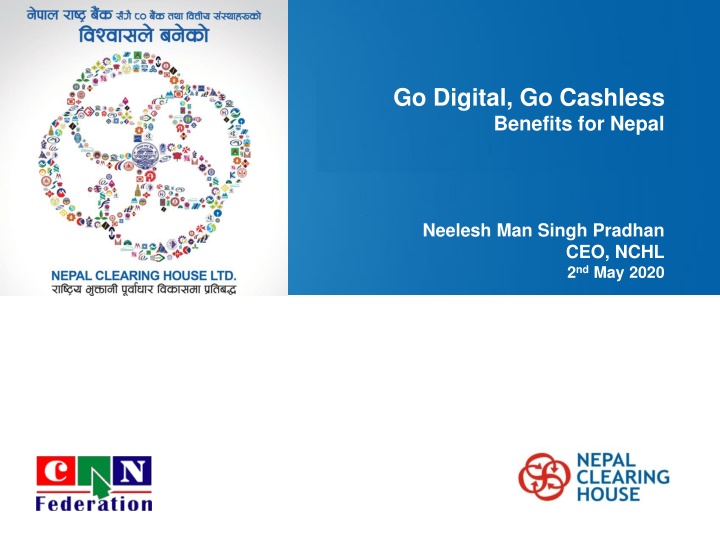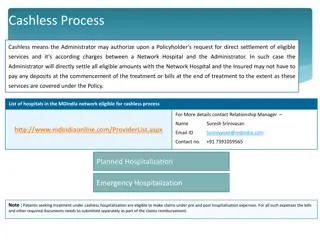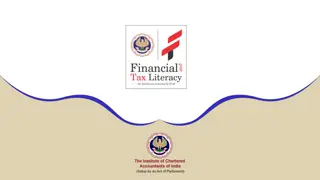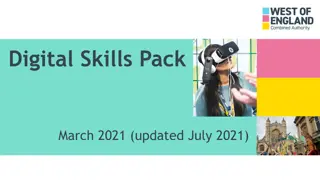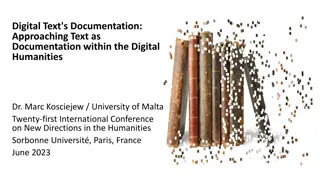Go Digital, Go Cashless
Learn how embracing a cashless society benefits Nepal through the connectIPS e-Payment System. Explore the digital ecosystem, cashless transactions, and the economic impact of reducing cash-to-GDP ratio for financial efficiency and transparency.
Download Presentation

Please find below an Image/Link to download the presentation.
The content on the website is provided AS IS for your information and personal use only. It may not be sold, licensed, or shared on other websites without obtaining consent from the author.If you encounter any issues during the download, it is possible that the publisher has removed the file from their server.
You are allowed to download the files provided on this website for personal or commercial use, subject to the condition that they are used lawfully. All files are the property of their respective owners.
The content on the website is provided AS IS for your information and personal use only. It may not be sold, licensed, or shared on other websites without obtaining consent from the author.
E N D
Presentation Transcript
connectIPS e-Payment System Go Digital, Go Cashless Benefits for Nepal Neelesh Man Singh Pradhan CEO, NCHL 2nd May 2020
Agenda Digital Ecosystem and Cashless Society Digital Payments Indicators How does it benefit? NCHL Role Nepal s Cashless Journey
Digital Ecosystem & Cashless Society Digital Ecosystem Cashless/ Less Cash Society Cashless society is an economic concept or state where the financial transactions take place through transfer of digital information instead of physical banknotes or coins. Business Process/ Services Banking & Payments Telecomm unication
Digital Ecosystem & Cashless Society Payment Instruments Transaction Value Vs Volume Cash Mobile Wallets/ Stored Value Mobile Banking Internet Banking Cards (Debit/ Credit) Faster Payments (connectIPS) ACH Cheques RTGS/SWIFT Value Volume Value Vs Volume
Digital Payments Indicators Impact Services Transactions Inclusion Contribution towards economy Impact on GDP Onboarding of service providers/ business What product or service can be purchased? Volume and value of transactions No. of active customers Number of customers enrolled. Eg. No. of cards or mobile banking issued
Digital Payments Indicators Indicator for Impact Measuring informal sector. Shift toward digital transaction. Currency In Circulation - GDP Ratio Norway 1.5% Sweden 1.8% Nepal Currency-GDP Ratio New Zealand 2.3% Denmark 3.3% South Africa 3.4% FY2011 12.1% Brazil 3.4% FY2012 13.1% Chile 3.6% Canada 3.7% FY2013 13.6% Indonesia 4.1% UK 4.1% FY2014 13.7% Australia 4.2% 14.9% FY2015 Turkey 4.7% Korea 5.4% FY2016 17.0% Israel 5.7% US 7.4% FY2017 16.3% Singapore 8.5% Russia FY2018 16.3% 9.0% China 9.3% 0.0% 5.0% 10.0% 15.0% 20.0% Taiwan 9.4% Eurozone 10.1% * Source: NRB Apr 2019 Quarterly Economic Bulletin Switzerland 11.1% Thailand 11.4% India 12.5% 8.1% 2011 9.6% 2018 Hong Kong 14.7% 0.0% 5.0% 10.0% 15.0% 20.0% Global Average of Currency to GDP Ratio (Boston Consulting Group 2018) * Source: Central Bank Bulletins 2017
How does it benefit? Economic Perspective Reduction in Cash-to-GDP ratio Savings on producing currency notes. BCG (2019) estimates that a move to a cashless model would add about 1 percentage point to the annual GDPs of mature economies and more than 3 percentage points to those of emerging economies. Due to increase in velocity of value transfers. Increased financial transparency could be a tool to fight corruption Efficiency in reporting and reconciliation and better monitoring of the movement of money
How does it benefit? Customer/ Service Perspective Eliminates business risks associated with cash (eg. theft, counterfeit currency) Increased convenience for the customers and service providers. Availability of services (commercial and non-commercial) are getting on-boarded on digital platforms. Improves transaction speed. Now becoming necessity during current pandemic situation, with huge opportunity to continue digital services.
NCHL Role Nepals Cashless Journey NCHL Product/ Service Roadmap Consolidated APIs for transaction routing between payment systems and overlaying services. (45) Real-time retail payment system for bank account based transactions through alternate channels (82) Gateway for transaction processing of RTGS (hosted at central bank) (33) ACH system for processing of single and bulk transactions (direct credit/ direct debit) (93) Processing of MICR image based instruments including cheques, drafts, warrants (69)
NCHL Role Nepals Cashless Journey NCHL Approach Support NPS Integrations Implement & support SIPS based NPS. (Refer to NPS Development Strategy, Strategic Plan and Retail Payment Strategy of NRB) Provide online/offline integrations for NRB, BFIs, other participants including service providers. Hosted Model Overlaying Services Hosted model for central infrastructures and participant systems thereby reducing the capital expenditure for the industry. Additional facilitations to typical non-conventional service providers (creditors) for overlaying services Reinvestment Principle Collaboration New systems implemented under re-investment principle from revenue/ cash flow of previous systems. Collaborate with BFIs, PSPs, PSOs, and other institutions for ecosystem development
NCHL Role Nepals Cashless Journey Non-Cash Transactions (NCHL Systems) Non-Cash Transactions Value in Billions Non-Cash Transactions Volume in '000 16,873 15,515 69% CAGR 64% CAGR 9,220 10,445 11,566 7,498 7,054 5,440 6,547 7,322 3,605 5,336 2,122 2,761 2,687 1,224 239 524 68/69 69/70 70/71 71/72 72/73 73/74 74/75 75/76 76/77 68/69 69/70 70/71 71/72 72/73 73/74 74/75 75/76 76/77 GoN Non-Cash Transactions (Value in Billions) GoN Non-Cash Transactions (Volume in '000) 453.7 200.0 429.4 166.3 131.2 150.0 100.0 48.4 81.7 50.0 52.2 48.0 3.1 2.1 5.3 0.4 - 73/74 74/75 75/76 76/77 73/74 74/75 75/76 76/77 Payout Revenue Collection Payout Revenue Collection Data up to Chaitra 2076
